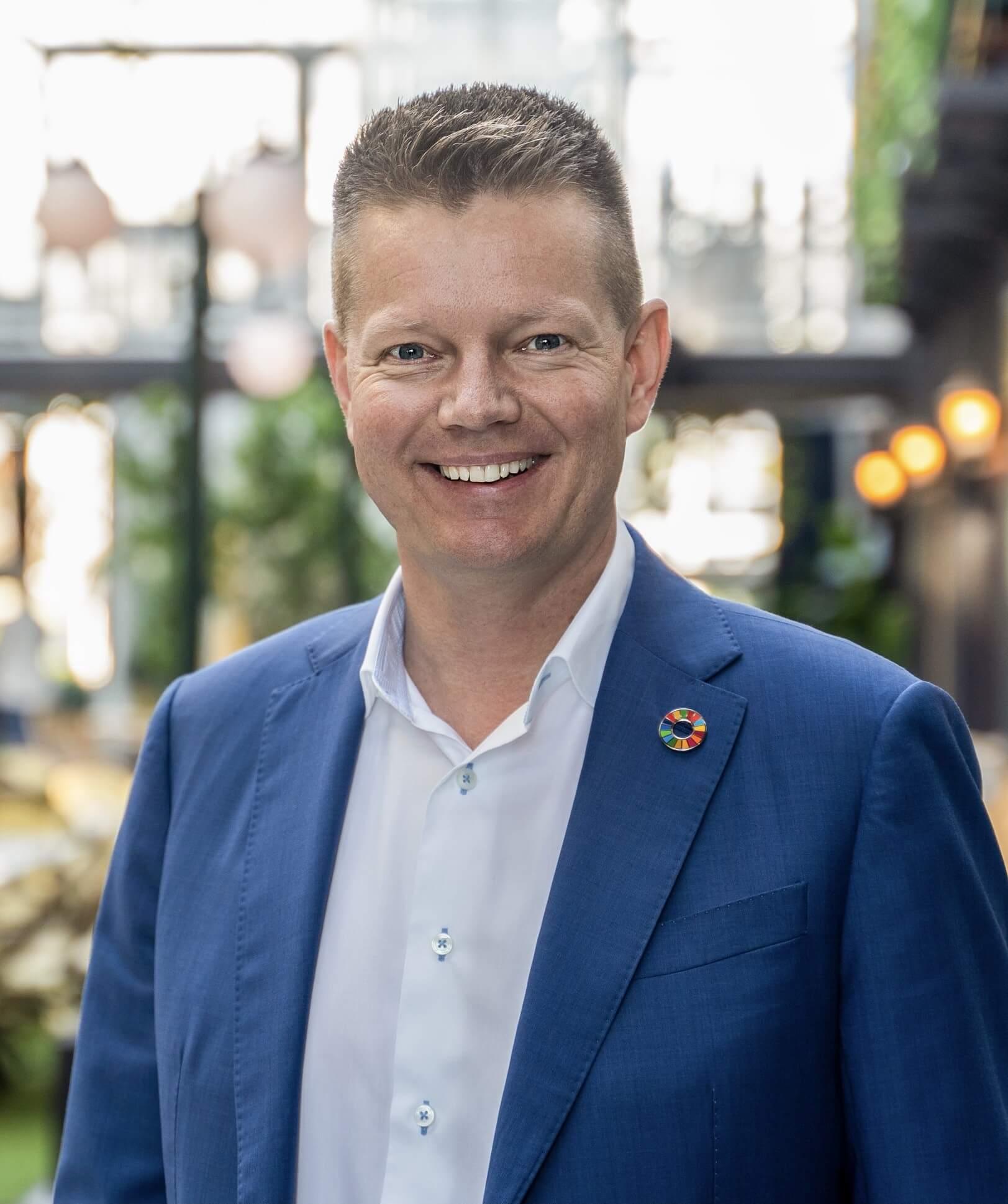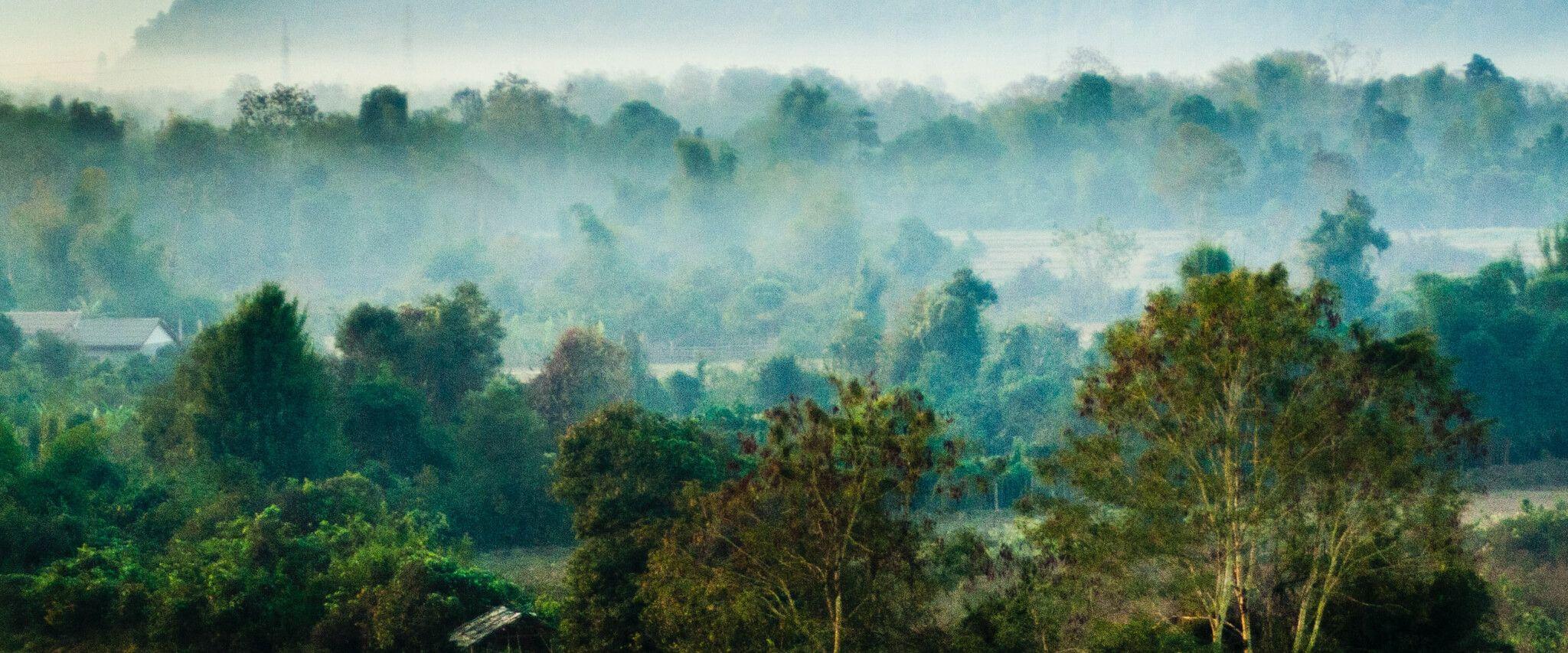From Satellites to Soil
Entrepreneur and soil advocate Ole Kristian Sivertson is passionate about restoring and preserving microorganisms. His earlier work in the satellite image industry offered him a unique perspective on Earth’s changing surface. Now, he and his team work to ensure that the delicate balance of the planet’s microbiome survives.
I'm Ole Kristian Sivertsen, and my journey has taken me from the heights of satellites to the grounding realities of the soil beneath our feet, a perspective that offers a view of the urgent need to preserve our natural resources. In 2019, employed in the satellite services industry, I was reminded that we're often too close to problems to see them fully.
Observing Earth from space revealed dramatic loss of fertile land and declining biodiversity. This view illustrated Earth’s shrinking arid topsoil in full colour – swaths of brown encroaching on verdant land. According to the United Nations, twelve million hectares are lost to desertification annually, which is equal to 2,000 football fields of land lost every hour.
Desertification and soil degradation happen out of sight, out of mind. The loss of 2,000 football fields an hour is invisible to our eyes because it's scattered around the globe. Soil degradation happens beneath our feet, and our fertile topsoil gets thinner every year. Imagine our planet's topsoil as the skin of an orange a century ago; today, it's more like the thin skin of an apple, a "skin" which serves as the foundation for 95% of our food and even the air we breathe.
The eye-opening satellite view of our planet’s declining topsoil sparked my desire to work for a greater purpose. It made me leap from the security and comfort of a corporate career into the exhilarating world of a climate-impact start-up with Desert Control.
As a dedicated steward of our planet's vital soil ecosystem, I believe restoring deserts and degraded land is crucial to preserving our natural resources. l.
At Desert Control, we combat desertification and water scarcity with our solution, Liquid Natural Clay (LNC). We've invented a process to turn natural minerals into a liquid that, when applied to land areas, coats each grain of sand with an electrical charge, holding onto water like a magnetic force. The result is a soil structure that retains water and nutrients like a sponge, acting as a foundation to restore soil microorganisms vital to life on Earth.
Soil is a bustling metropolis of biodiversity. A mere teaspoon of healthy soil contains more living organisms than people on Earth. This underground universe of tiny superheroes drives the circle of life and the carbon cycle—but these microorganisms are under attack. Twelve million hectares of annual land loss equals the loss of soil organisms, comparable to 25 million African elephants. These microscopic superheroes, crucial to our survival, face extinction unless we act.
A mere teaspoon of healthy soil contains more living organisms than people on Earth. This underground universe of tiny superheroes drives the circle of life and the carbon cycle—but these microorganisms are under attack.
The very soil we depend on is turning against us. Agriculture already consumes more than 70% of all available freshwater on Earth. As soil turns to sand, even more water is needed to grow food. Producing a single hamburger requires over 2,000 litres of water, a slice of bread equals 80 litres, and a small cup of coffee amounts to 130 litres.
With the increase in global population, so does the demand for food and water, creating a cycle that current practices cannot sustain.
Food security is intrinsically linked to water and energy, especially when freshwater sources are strained. Desalination and the pumping of water are core components of this food-water-energy nexus. This is where innovations like LNC have an exponential impact—reducing water, fertiliser, and energy usage while increasing yields to support sustainable food production.
My journey with Desert Control is more than developing a solution; it's about regenerating the delicate balance that sustains life on Earth. By restoring soil, we restore hope for a better future—one acre at a time. Healthy soil for food and water security is the foundation for a stable climate that provides a pathway to peace and prosperity.
Our actions today write the story of tomorrow. Going to space to realise the down-to-earth changes needed for a sustainable future may not be necessary. Your actions, no matter how small, can create the spark that ignites a global movement. Simply saving the tiny superheroes beneath our feet can save us all.
Most Popular
The Climate Tribe delivers stories about Biodiversity and Conservation, Circular Economy, Food and Water , and how they intersect with climate.
Subscribe
Get the latest stories inspiring climate action around the globe straight to your inbox.






